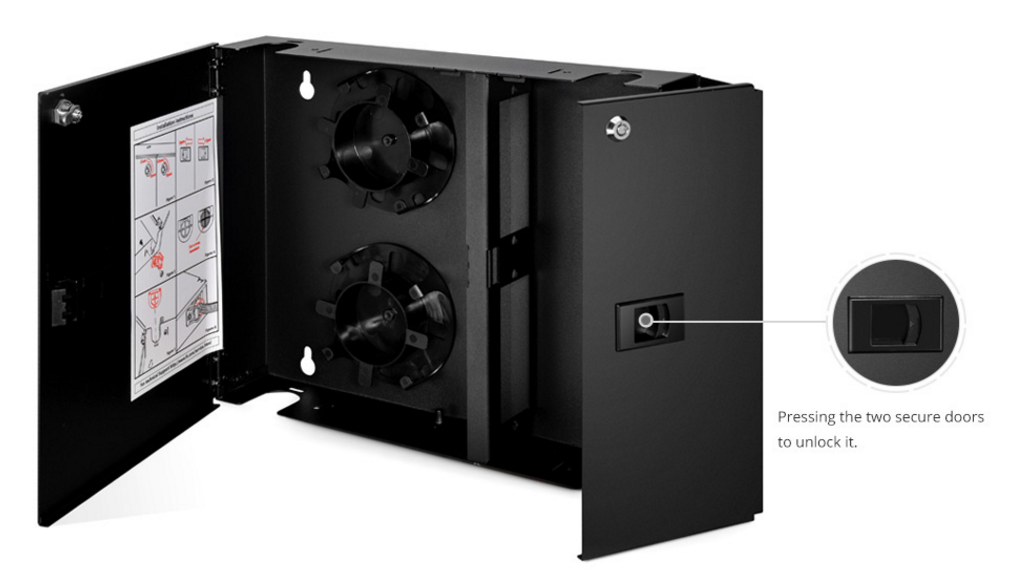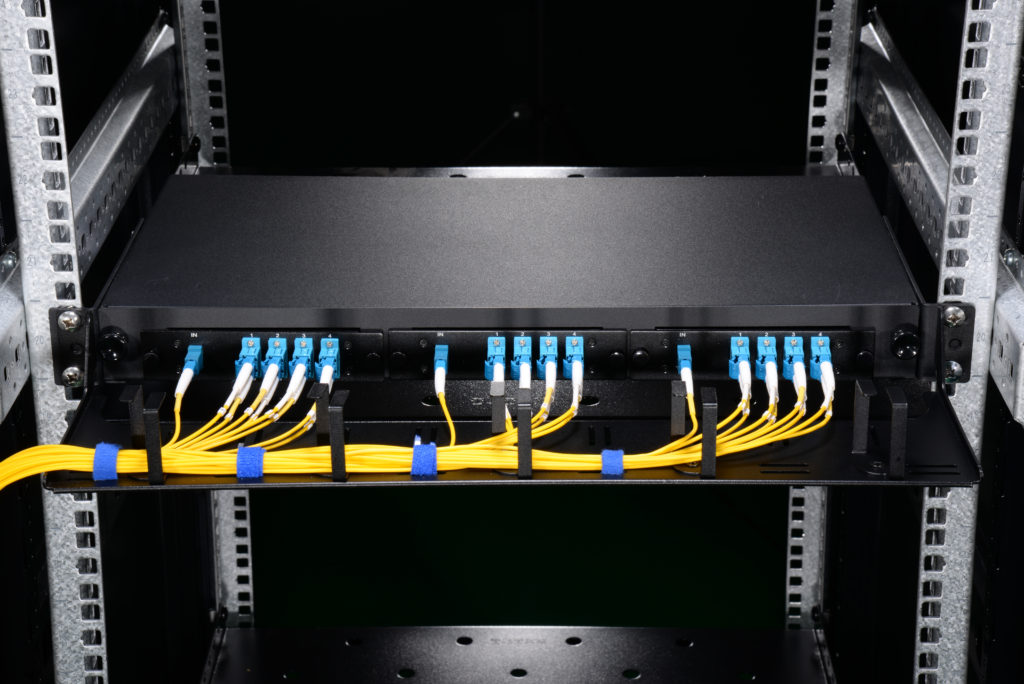Patch panels are termination units, which are designed to provide a secure, organised chamber for housing connectors and splice units. Its main function is to terminate the fibre optic cable and provide connection access to the cable’s individual fibres. Patch panels can be categorised into different types based on a few different criteria. Last time, we have shed light on the copper and fibre patch panel and now let’s learn a different pair of it, namely wall mount patch panel and rack mount patch panel.
Wall Mount Patch Panel
As the name suggests, wall mount patch panel is a patch panel fixed on the wall.The wall mount patch panels are designed to provide the essential interface between multiple fibre cables and optical equipment installed on the customer’s premises. The units offer networking and fibre distribution from the vault or wiring closet to the user’s terminal equipment.
This kind of patch panel consists of two separate compartments. As shown below, the left side is used for accommodating outside plant cables entering the building, pigtails and pigtail splices. Whereas, the right side is designed for internal cable assembly networking. And both sides have a door secured with a quarter turn latch.
Rack Mount Patch Panel
The rack mount patch panel usually holds the fibres horizontally and looks like a drawer. Rack mount panel is designed in 1U, 2U, 4U sizes and can hold up to 288 or even more fibres. They can be mounted onto 19″ and 23″ standard relay racks. The rack mount enclosures include two kinds. One is the slide-out variety and the other incorporates a removable lid. As for the latter one, the tray can be pulled out and lowered to 10 degree working angle or even further 45 degree working angle to provide ease of access for maintenance or installation work.
Wall Mount VS Rack Mount Patch Panel
- Installation
When installing wall mount patch panels, users need to leave at least 51mm additional space on each side to allow opening and removing the doors. Although it can be easily mounted to the wall by using the internal mounting holes, four screws are required when it is attached to a plywood wall, expansion inserts with wood screw for concrete walls and “molly bolts” for sheet rock. However, the installation of a rack patch panel just needs four screws without drilling the wall.
- Space Occupation
Thinking from another perspective, the advantage of wall mount patch panels is that they allow you to optimise your work space by keeping equipment off floors and desks,which is superior to the rack mount patch panel.
- Application
Both panels can be applied to Indore Premise Networks, Central offices (FTTx), Telecommunication Networks, Security Surveillance Applications, Process Automation & Control, Systems and Power Systems & Controls, while the rack mount patch panel has an advantage over the wall mount patch panel in that it can be applied to Data Centres.
Conclusion
To sum up, patch panels are available in rack mounted and wall mounted and are usually placed near terminating equipment (within patch cable reach). Both types can provide an easy cable management in that the panel ports can be labeled according to location, desktop number,etc. to help identify which cable from which location is getting terminated on which port on the patch panel, and changes can be made at the patch panel. The world-wide renown FS.COM can provide you the best quality rack mount and wall mount patch panel. Buyers are welcome to contact us.


